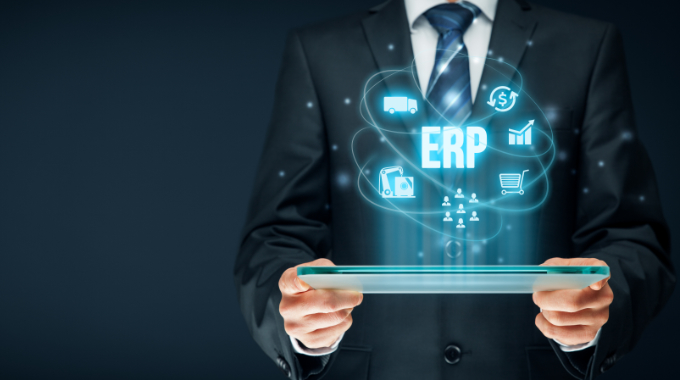
Check out here what an ERP is, the origin of this system and how it has been applied in companies over the years.
Widely used in companies today, ERP has undergone a series of changes and updates throughout its history to ensure the best performance within organizations.
But despite being a recognized term in the middle management, ERP still raises some doubts.
If you already use an ERP in your business or are thinking of implementing this system, check out the history of this system in this article, the changes it has undergone, and how its application in companies has evolved over the years.
What is ERP?
ERP is an acronym for Enterprise Resource Planning.
In practice, ERP is a system that facilitates the flow of information from all processes of a company, automating procedures and integrating various business functions, operational, administrative, financial and transactional.
The purpose of ERP is to digitize and automate processes — ensuring greater mobility and integration for all sectors of the company —, increasing agility in the execution of processes, optimizing managers' time, increasing data security and promoting the economy of business.
Put simply, ERP organizes the entire work routine of a company by recording a series of data and information regarding employees, customers, suppliers, partners, products, purchases, sales, production, accounting, finances, etc.
How did ERP come about?
ERP as companies know and use it today evolved from its predecessor, MRP — Materials Requirements Planning, which originated in the 1970s.
MRP made use of computers to perform automated tasks and manage bills of materials in conjunction with inventory data, thus keeping material inventory as close to optimal as possible.
In 1981, the model was expanded, giving rise to MRP II. This version incorporated the possibility of making new analyzes and adjustments in the production schedule, in addition to bringing new resources, such as HR and budgeting.
The ERP closer to the current mold only gained strength in the 1990s, becoming popular mainly because of the evolution of communication between computer systems.
The first versions of ERP systems had functionalities in finance, accounting, inbound and outbound logistics, HR, sales, among others, previously managed by isolated systems.
Over the years, the system has evolved to meet the demands of organizations, using the resources provided by the internet, in addition to incorporating new features and functionalities.
However, in recent years companies have realized that ERP systems on-site can no longer keep up with security needs or emerging technologies — such as smartphones.
In this way, ERP introduced a new software delivery model as a service (SaaS - Software as a Service). In other words, ERP is now being delivered as a cloud service, running on a network of remote servers connected via the internet.
In this new "format", the cloud provider manages, corrects and updates the software constantly, reducing operating expenses and capital and eliminating the need for companies to have additional IT staff.
Considering that ERP is constantly evolving and encompasses more and more new features that increase the effectiveness of systems within companies, the presence of this software within organizations today is almost mandatory, regardless of business size or field of activity.
Now that you know more about the history of ERP and its evolution in the corporate market, how about incorporating or modernizing this system in your company?
Go On Associated is a consultancy specializing in JD Edwards ERP systems, and promotes business management support solutions to meet the specific demands of each client.
Through JD Edwards tools, Go On develops excellent solutions for the adequacy and customization of ERP based on the needs identified in each area of the client's business. Count on an integrated and modern ERP for the management of your company
Contact our consultants and learn more about Go On solutions.





